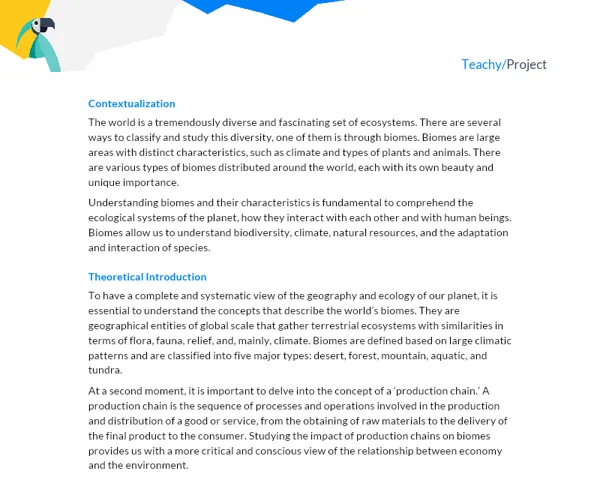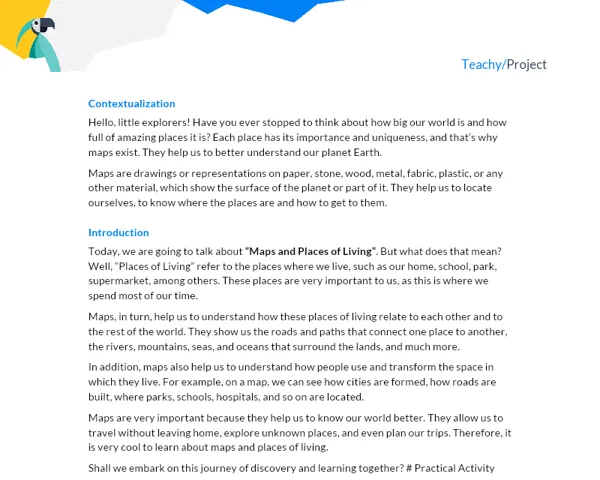Contextualization
Theoretical Introduction
Soil is one of the most essential elements of the Earth system, being fundamental for the balance and survival of various ecosystems. Its formation occurs through the integrated action of soil formation agents, which include climate, relief, living organisms, parent material, and time. Each of these factors determines the physical, chemical, and biological characteristics of a soil, influencing its ability to support plant and animal life.
Soil classification, therefore, is based on the observation of these characteristics, as well as on the interpretation of how they were formed. Several classification systems have been developed to capture the enormous diversity of soils found worldwide, including the USDA Soil Taxonomy and the Brazilian Soil Classification System. Such systems allow geographers, agronomists, ecologists, and other professionals to better understand the soil and manage it sustainably.
It is also important to note that soil plays a crucial role in various global processes, including the water cycle, the carbon cycle, and food production. Furthermore, soil is the foundation for the construction of our cities, roads, and other infrastructures. Understanding the formation, classification, and functions of soil is therefore vital for a range of disciplines and for society as a whole.
Contextualization
Undoubtedly, the relevance that soil holds for life on our planet is immense. In an increasingly urban and digital society, we can easily lose sight of how much we depend on soils for our survival. Soils are sources of food, water, and shelter for a wide range of organisms. For us humans, soil is the basis of our agricultural and forestry production, providing us with food, fibers, wood, and other essential resources.
Moreover, soils are of immense importance for global environmental issues, such as climate change. They act as a huge carbon reservoir, helping to regulate the Earth's climate. At the same time, imprudent soil management can contribute to the release of large amounts of greenhouse gases, leading to global warming. Thus, sustainable soil management is a fundamental part of our efforts to combat climate change and promote sustainability.
Practical Activity
Activity Title: "SOLO 2: Discovering and Mitigating Soil Erosion"
Project Objective
This project aims to develop in students an understanding of how soil erosion occurs and how it affects local and global ecology, as well as to analyze sustainable practices to mitigate soil erosion. In addition, students will use concepts from geography, biology, chemistry, and physics to carry out this project.
Project Description
In groups of 3 to 5, students will analyze different types of soil and their respective erosion potentials. Subsequently, they should research sustainable agricultural practices that help mitigate soil erosion and learn to develop a proposal for implementing these practices in a specific scenario.
Required Materials
- Samples of different types of soil (clayey, sandy, etc.)
- Transparent containers
- Water
- Stopwatch
- Precision scale
- Research material (books, internet access, etc.)
Step by Step
Part 1: Erosion Experiment
- Each group should collect different soil samples (at least 4 distinct types).
- In transparent containers, place the same amount of each type of soil.
- Tilt the containers at a 45° angle and pour the same amount of water into each of them at the same time.
- Observe and record: which type of soil retains more water? Which type of soil causes more erosion (soils that lose more mass after the water passes through)?
- Weigh the samples after the experiment with a precision scale to evaluate the degree of erosion in each type of soil.
- Record all collected data for further analysis.
Part 2: Research and Proposal
- Each group should research methods for preventing soil erosion (may include sustainable agriculture practices, reforestation, etc.)
- Choose a specific scenario (a farm, an urban area, a forest, etc.) and develop a detailed action plan to implement the researched soil erosion prevention practices.
- This action plan should take into account economic, social, and environmental aspects.
Part 3: Final Report
Each group must prepare a detailed report covering:
- Introduction: contextualization of the soil erosion problem and the purpose of the project carried out.
- Development: detailing the experiment conducted (methodology, processes, results) and the research on erosion prevention practices.
- Discussion of results: interpret the data obtained in the experiment; discuss the implications of the results for society and the environment.
- Action proposal: present the developed action plan, explaining how the researched practices can be implemented in the chosen scenario.
- Conclusion: closing the report with final considerations, the learnings acquired in the project, and the importance of conscious soil management for sustainability.
- Bibliography: listing all research sources used in the project.
The report is an essential part of this project and should reflect the entirety of the work done by the students, encompassing practical experimentation, conducted research, and critical thoughts derived from this experience.


